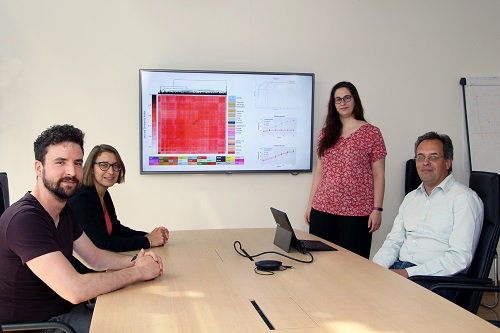Researchers from the Life Sciences Research Unit (LSRU) of the University of Luxembourg have developed a computer model that simulates the metabolism of cancer cells. They used the programme to investigate how combinations of drugs could be used more effectively to stop tumour growth. The biologists now published their findings in the scientific journal EBioMedicine of the prestigious Lancet group.

The metabolism of cancer cells is optimised to enable fast growth of tumours. “Their metabolism is much leaner than that of healthy cells, as they are just focused on growth. However, this makes them more vulnerable to interruptions in the chain of chemical reactions that the cells depend on. Whereas healthy cells can take alternative routes when one metabolic path is disabled, this is more difficult for cancer cells,” explains Thomas Sauter, Professor of Systems Biology at the University of Luxembourg and lead author of the paper. “In our study, we investigated how drugs or combinations of drugs could be used to switch off certain proteins in cancer cells and thereby interrupt the cell’s metabolism.”
Digital models of healthy and of cancerous cells
Therefore, the researchers created digital models of healthy and of cancerous cells and fed them with gene sequencing data from 10,000 patients of the Cancer Genome Atlas (American National Cancer Institute) of the TCGA (NCI). Using these models, the researchers were able to simulate the effects different active substances had on cells’ metabolisms so they could identify those drugs that inhibited cancer growth and at the same time didn’t affect the healthy cells. The models allow filtering out drugs that do not work or are toxic, so that only the promising ones are tested in the lab.
With the help of the models, they tested about 800 medications of which 40 were predicted to inhibit cancer growth. About 50 percent of these drugs were already known as anti-cancer therapeutics, but 17 of them are so far only approved for other treatments. “Our tool can help with the so-called “drug repositioning”, which means that new therapeutically purposes are found for existing medication. This could significantly reduce the cost and time for drug development,” Prof. Sauter said.
The particular advantage of the approach is the efficiency of its mathematical method. “We managed to create 10.000 patient models within one week, without the use of high-performance computing. This is exceptionally fast,” comments Dr. Maria Pacheco, postdoctoral researcher at the University of Luxembourg and first author of the study. In addition, Dr. Elisabeth Letellier, principal investigator at the Molecular Disease Mechanisms group at the University of Luxembourg and collaborator on the present study, further emphasizes “In the future, this could allow us to build models of individual cancer patients and virtually test drugs in order to find the most efficient combination. This could also bring fresh hope to patients for whom known therapies haven proven to be ineffective.”
So far, the models have been tested only for colorectal cancer, but the algorithm basically also works for all sorts of cancer, according to Thomas Sauter. He and his team are currently considering to develop commercial applications for their method.
Link to the publication: “Identifying and targeting cancer-specific metabolism with network-based drug target prediction“, EBioMedicine, May 2019
Photo: © iStock
